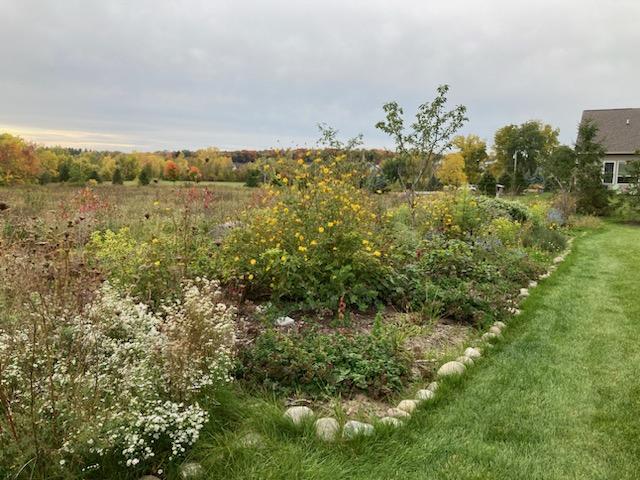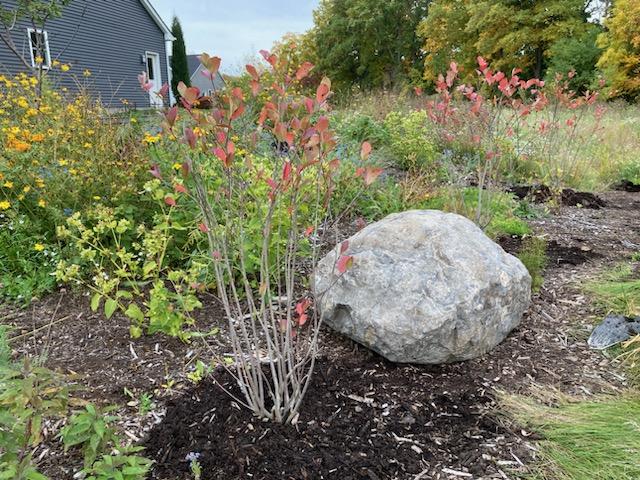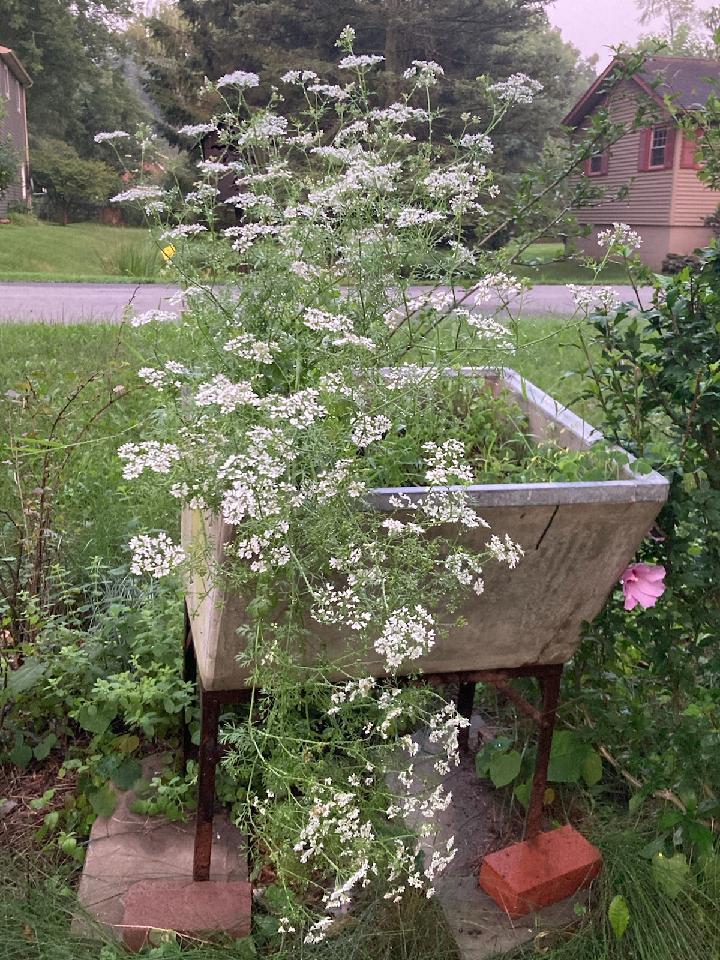
When I started my permaculture business in 2009 and was thinking about what I wanted to call it, I thought of my love of walking barefoot on the Earth (beaches, forests, and my own yard) and envisioned helping folks steward land spaces in ways that invite them and their families to take off their shoes and walk and play outdoors, literally soaking up the physical and mental health benefits of connecting our feet with the soil. As we rewild the land, we begin to repair ecosystems and can heal ourselves in the process.
Permaculture is an interdisciplinary design approach, based in and derived from the observation of indigenous practices of nature stewardship and natural ecological systems of relationships, that strives to repair and create regenerative and reciprocal systems for meeting human needs while also enhancing the quality of life for all beings including plants, insects, nonhuman animals, and fungi. Essentially, the ethics of “Earth Care, People Care, and Resource Share” are held as values while we decide how to steward a land space, even the humble urban yard.
So how do we who are blessed to steward some land as homeowners, renters, homesteaders, or farmers bring these regenerative practices into our lives? One way is as simple as not doing some things—skip the lawn fertilizer, herbicides, and insecticides. Already your lawn will be safer for your bare feet and your pets. Also, less mowing is more nature-friendly. Maybe you’ve heard of “No Mow May” where folks put mowing off long enough that many of the grounddwelling pollinators have time to wake up in spring and leave their winter homes in the soil and in plant debris? Your apples, tomatoes, and even nut trees will produce greater yields with more pollinators in your neighborhood. Over time, you’ll be amazed at the wildflowers that appear. You might even pick a space that you let go wild—a corner or a spot behind the garage—and see what happens over the years. These are really easy steps to take to get started as all you must do is . . . nothing! Plus, you save money and time.

You can then use that time and money to go a little further with regenerating your space. Remembering that much of the land in our region is naturally a humid temperate forests ecosystem, we can use the layers of the forest model to add some biodiversity. Permaculture principles lead us to the idea of “right plant, right place” as we reimagine stewarding our land. Need more shade? Plant some northern hardy pecans (Carya illinoinensis) or American persimmon (Diospyros virginiana). Planting trees under utility lines? Dwarf and semi-dwarf fruit trees won’t grow up into the wires. If you’re looking to install a privacy hedge, hazelnuts (Corylus americana) are easy to grow and will form a manageable thicket over time. Running juneberries (Amelanchier stolonifera) will form a shorter living fence. The bonus with all these trees and shrubs is that you’re also creating a food source for you and wildlife. Permaculture folks call that stacking functions, more than one yield from a design element. Shade and privacy screens also become food and wildlife habitats.
If you like the look of what could be called conventional landscaping, think boxwood foundation plantings with impatiens in front, an invasive barberry hedge along the property line, and shrub and flowers along the driveway, you can get a that look with plants that will provide food for you, pollinators, and wildlife. Both blueberries (Vaccinium spp.) and aronia foliage turn brilliant red in fall and produce yummy “superfood” berries. Honeyberry (Lonicera kamtschatica) shrubs thrive even in part-shade, don’t require acidic soils, plus they fruit in MAY! Planting perennial flowers will, in the long run, save you money and planting time plus less soil disturbance means the carbon stays in the soil. Imagine a colorful pollinator strip with flowers of various colors and shapes that bloom from April to October along your driveway. Some of my versatile favorites are bee balm (Monarda didyma), butterfly weed (Asclepias tuberosa), and yarrow (Achillea millefolium). Cardinal flower (Lobelia cardinalis) will thrive in wet spots and, along with bee balm, bring hummingbirds to feed. In addition to long-lasting blooms, these beautiful perennials will feed and shelter beneficial insects and are food and medicine for you.
On a budget? Order a tree or shrub bundle from your county’s Soil and Water Conservation District at about two dollars per plant. Cooperative Extensions often host plant sales in May and offer low-priced perennials. (Go early; they sell out fast!) “Buy Nothing” and gardening meetup groups offer freebies.

If you’re already a vegetable gardener, you can invite nature in to boost your efforts by planting a cover crop or covering your garden with cardboard and leaves for a winter rest. A compost bin makes it easy to return the nutrients in your decomposed weeds, end-of-season trimmings, and kitchen scraps back to your soil. Going no-till means you’ll leave soil structure and beneficial soil organisms in place. These practices will improve soil fertility and organic matter. I once heard a radio DJ incorrectly offer asparagus and rhubarb as THE two perennial veggies. Not so! Perennial sea kale (Crambe maritima) is a sweeter version of kale and broccoli. Good King Henry (Chenopodium bonus-henricus) is a perennial spinach. Egyptian walking onions (Allium cepa proliferum) and nodding wild onions (Allium cernuum) are yummy and, together, keep you in onions all season.
Container gardening in discarded roadside pots or upcycled items is great for folks with mobility challenges, renters, and even folks on high-rise balconies. Imagine leaky boots or outgrown shoes growing violets or oregano or a wicker laundry basket with a missing handle for potatoes and buckwheat as a companion plant. My best score was a 2’ x 4’ shipping container where I grew lettuce, onions, and mountain orach for at least five years before it rotted. You’ll see a cement laundry sink in my front yard filled with cilantro, sage, and sometimes flowers. Containers and raised up beds are also a safer alternative to leaded soils or over leach fields.
Keeping that “People Care” ethic in mind, we can soothe grumpy neighbors who might not like our wild corner by getting a sign from National Wildlife Federation’s Certified Wildlife Habitat Program or simply by planting native flowers where you can both enjoy them. Imagine wandering out barefoot in the morning dew to drink your tea and watch the beneficial insects crawling on those blooms!
Patty Love, founder of barefootpermaculture.com, is a certified permaculture designer and teacher who wanders barefoot in her creekside yard sipping foraged tea, marveling at nature, and cheerfully greeting her neighbors, some of whom have dubbed her place “the nature preserve.”
Views: 1





